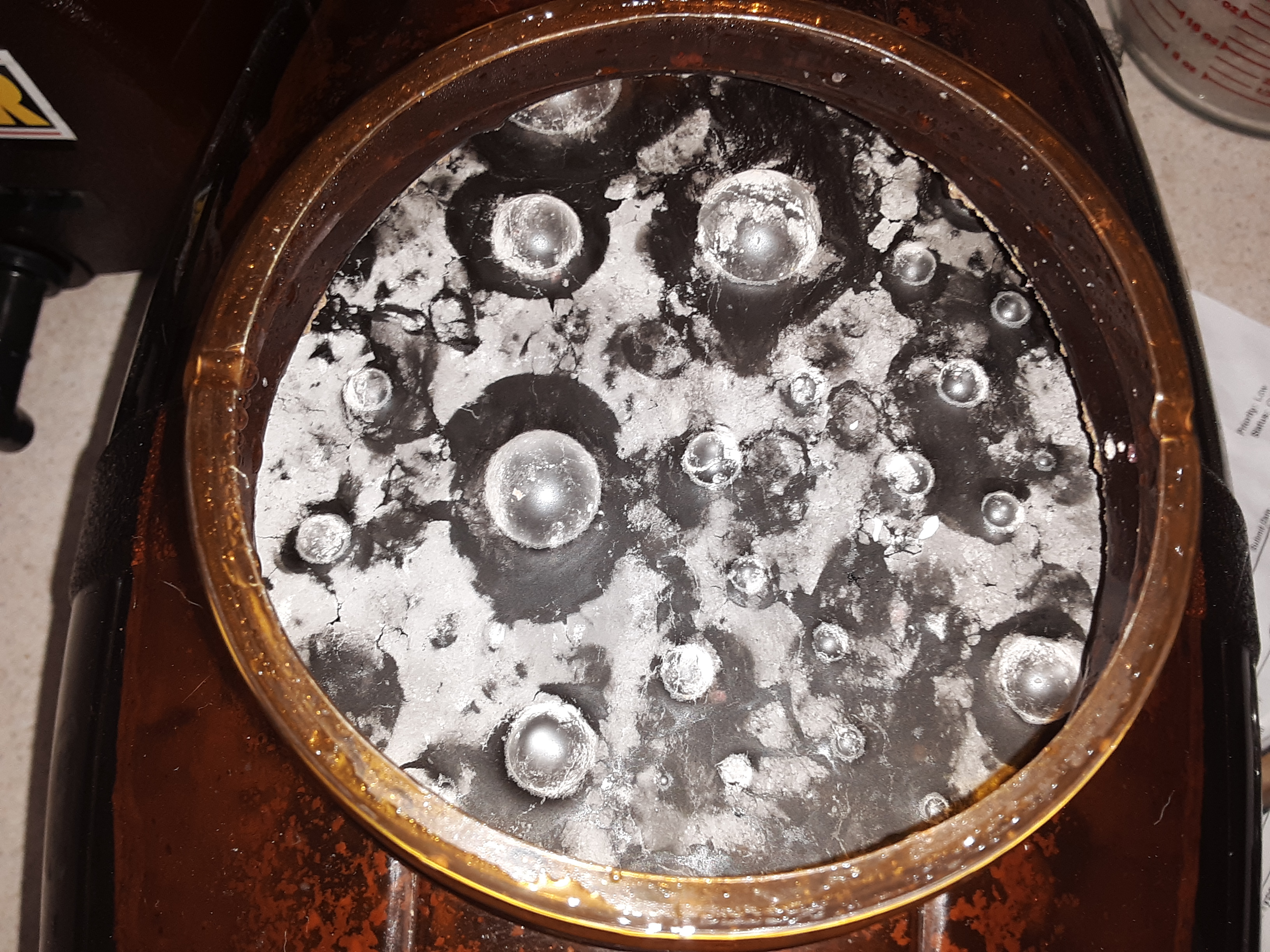Your beer is infected!
Usually due to bacteria or wild yeast that got in at some point. The white layer on top with the bubbles is called a pellicle. This one is beautiful!
If it still tastes like beer and tastes good, I'd say drink it as is, and ASAP, within a few days to a week. The pellicle and whatever microorganisms are 'growing' underneath are harmless. You could rack from underneath the pellicle, or try to skim it off with a spoon. Over time the pellicle will regrow and the beer will become (more) sour and may develop weird flavors as it progresses. Accidental sours are rarely good, but I've had some Milk Stouts that got a lacto infection that were very yummy, especially in the early stages.
If you try to carb it in bottles, it will certainly turn sour in the 3 weeks it takes, and may cause gushers or worse, bottle bombs if using glass bottles, due to the extra pressure that builds up. The infection will eat whatever sugars that are left in your beer, all the way down to 1.000, given enough time.
You can clean and sanitize the plastic 'barrel,' lid etc. Look for defects or scratches in the inner surface, and all parts, especially the spigot and its rubber seals. They can harbor bacteria.
'Bleach bombing' everything that has come in contact with the infected beer is probably best method to eradicate the infection vector. For that, soak everything in a bucket of water with a good dose of Chlorine bleach diluted in water. It will kill pretty much anything alive. Whatever has touched your infected beer should be 'bleach bombed.' This includes the barrel and all its parts, especially the little spigot which should be taken apart, scrubbed inside out.
If you decide to bottle (plastic bottles), you're probably best off to throw away any plastic (racking) hoses that came in contact with the infected beer, as they are difficult to sanitize and if not done 100%, may spread the infection to subsequent beers. The bottles should be bleach bombed too after being filled with this beer. You'll get the gist.
After bleach bombing, rinse well then soak in fresh water or lay outside in direct sunlight for a day, to get rid of any remaining bleach scent. Bleach doesn't belong in beer. The UV will also kill things. Then sanitize right before next use.
BTW, what sanitizer do you use?





